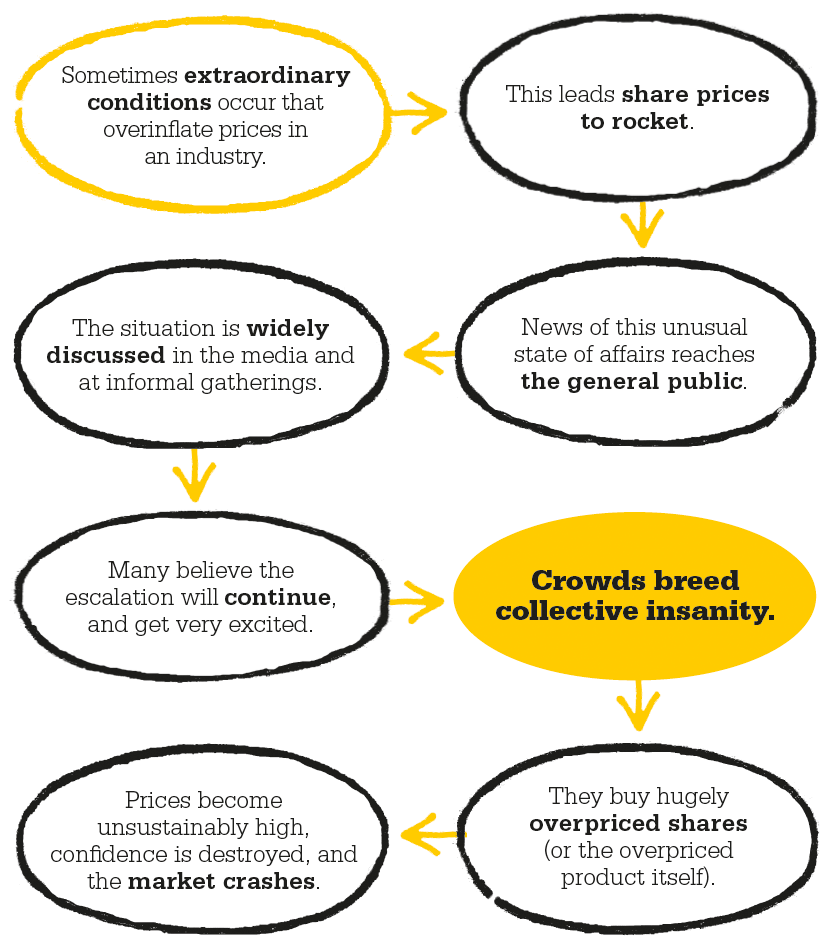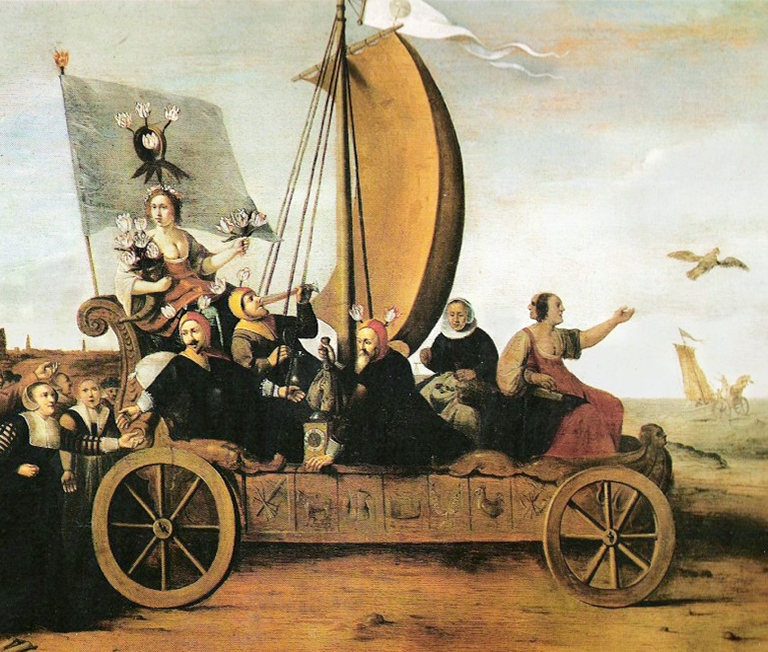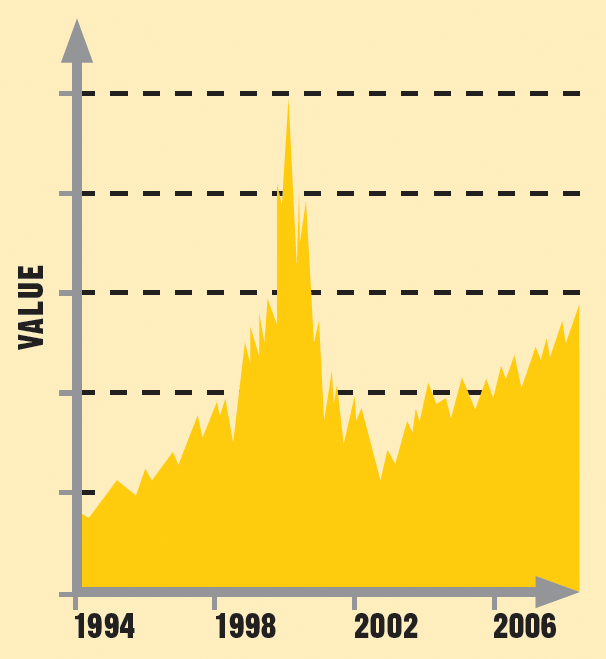

The macroeconomy
Charles Mackay (1814–89)
1637 Dutch nurseryman P. Cos publishes The Tulip Book, which provides raw data for the future prices of tulips.
1947 US economist Herbert Simon writes Administrative Behavior, introducing the idea of “bounded rationality”—poor decisions are due to limits in ability, information, and time.
1990 Peter Garber critiques Mackay’s work in his essay, Famous First Bubbles.
2000 US economist Robert Shiller publishes Irrational Exuberance, analyzing the causes and policy interventions that might prevent the occurrence of future economic bubbles.
In 1841, the Scottish journalist Charles Mackay published Extraordinary Popular Delusions and the Madness of Crowds, a classic psychological study of markets and the irrational behavior of people acting in “herds.” The book looks at some of the most famous examples of frenzied speculation in history, including Tulipomania (1630s), John Law’s Mississippi Scheme (1719–20), and the South Sea Bubble (1720).

Mackay’s hypothesis was that crowds acting in a collective frenzy of speculation can cause the prices of commodities to rise far beyond any intrinsic value they might have. When assets rise in such an uncontrolled way, the situation is called an economic bubble. Like actual bubbles, in an economic bubble prices rise upward but become more and more fragile—and they inevitably burst.
The Dutch tulip mania of the 1630s is one of the earliest and most notorious instances of an economic bubble. At the beginning of the 17th century tulips from Constantinople became popular with the wealthy of Holland and Germany, and soon everyone wanted them. Tulips were seen to bestow the qualities of wealth and sophistication on their owners, and the Dutch middle class became obsessed with collecting rare varieties. By 1636, the demand for rare species of tulips was so intense that they were traded on Amsterdam’s stock exchange.
Many individuals grew suddenly rich. A golden bait hung temptingly out before the people, and everyone—from noblemen to maidservants—rushed to the tulip markets, all imagining that the passion for tulips would last forever. But when the rich stopped planting tulips, their appeal diminished, and people realized the folly could not continue. Selling became more frantic, confidence plummeted, and the price of tulips collapsed. For those who had borrowed money to invest, it was disastrous.

Hendrik Pot’s painting of tulip mania (1640), shows the goddess of flowers riding with drunken, money-weighing men. Other people follow the cart, desperate to keep up with the group.
US economist Peter Garber claimed that speculators in these situations buy an asset in the full knowledge that the price is far above any “fundamental value” but do so because they expect prices to rise still further before they eventually crash. Since prices cannot rise forever, this involves the irrational belief “that the guy you will sell to is dumber [than you] and will not see the crash coming.” However, Garber believes sometimes there are real reasons behind the price rises—such as a fashion for ladies in France to wear rare tulips on their dresses. Nonetheless, in any bubble, the advice remains the same: “Let the buyer beware.”

The Dotcom Bubble peaked in 2000. Price rises were so extreme that people everywhere discussed them at dinner tables—a sure sign that a bubble is about to burst.
The Dotcom Bubble, which burst in March 2000, was the first of the 21st century. It had the classic bubble hallmark of prices being driven purely by speculation rather than by changes in real value (based on output or assets). Investors assumed that the world was about to be changed forever by the internet, so investing in e-commerce seemed to be a once-in-a-lifetime opportunity.
The new companies had no trading history, very low sales, and virtually no profits, yet they attracted hundreds of billions of dollars in investment. The crowd believed that every firm was potentially the next AOL, a firm whose clients jumped from 200,000 to one million in two years, and then climbed at around a million new users each month. Greed overcame fear and people rushed to invest. Between March 2000 and October 2002, more than $7 trillion was wiped off the market value of dotcom shares.
See also: Supply and demand • Behavioral economics • Bank runs • Global savings imbalances